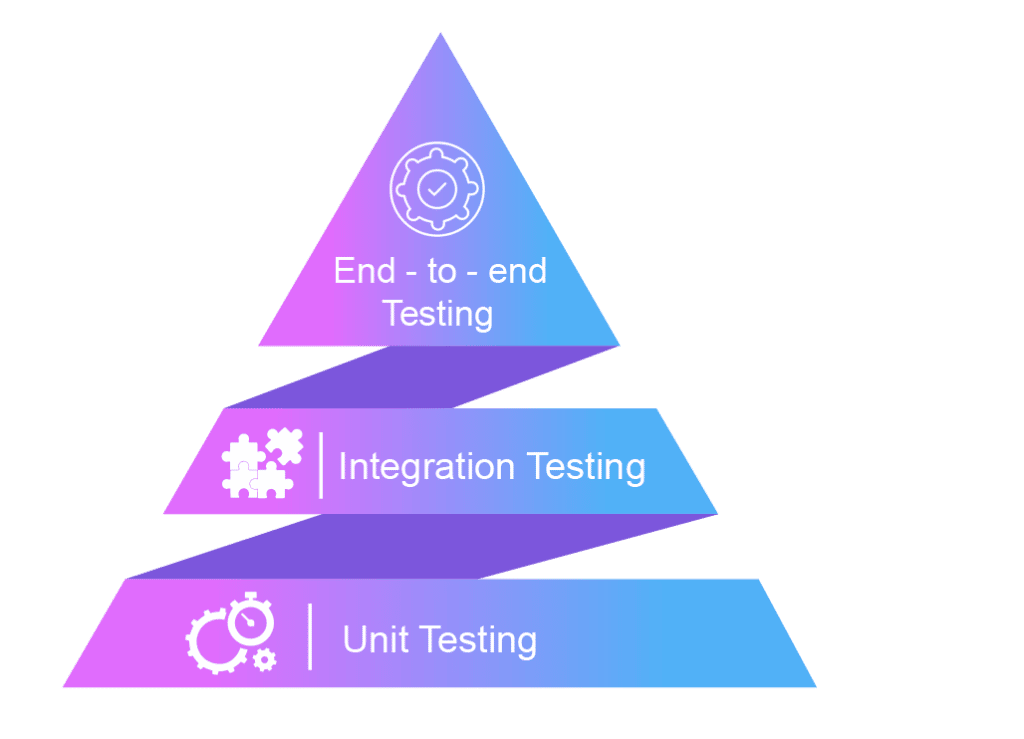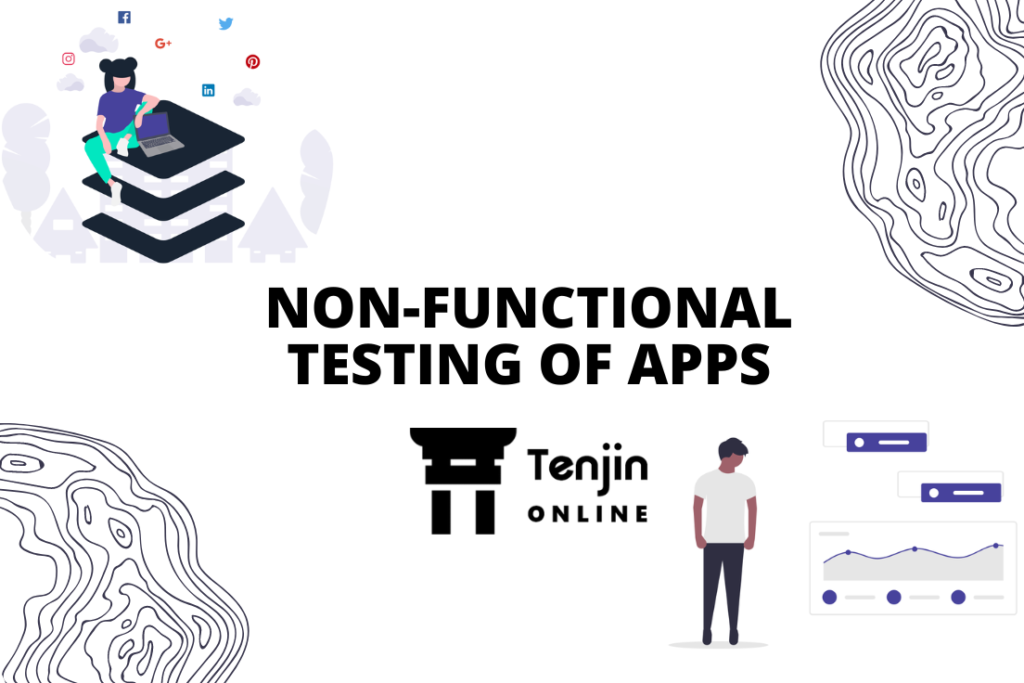 App testing isn’t a simple, sequential, and easy process, it involves complex scenarios like re-testing, regressions, integrations, etc., requiring it to reach deep into the basic code level and evaluate the issue. Additionally, it involves multiple iterations before launching the app, hence, to speed up the process a test automation pyramid should be incorporated. It strategizes the entire testing activities by setting up a solid foundation and guiding the testers on different types of testing involved and the order in which they should be tested. This visual representation is considered to be one of the best testing practices in agile development for great outcomes.
App testing isn’t a simple, sequential, and easy process, it involves complex scenarios like re-testing, regressions, integrations, etc., requiring it to reach deep into the basic code level and evaluate the issue. Additionally, it involves multiple iterations before launching the app, hence, to speed up the process a test automation pyramid should be incorporated. It strategizes the entire testing activities by setting up a solid foundation and guiding the testers on different types of testing involved and the order in which they should be tested. This visual representation is considered to be one of the best testing practices in agile development for great outcomes.
Test automation pyramid, also known as agile testing pyramid, is a framework that helps developers and testers to produce high-quality apps. The concept of test automation pyramid was introduced by an educator and author Mike Cohn, to differentiate between conventional testing and test automation. Today, test automation pyramid is commercially used to understand and execute testing better to yield positive business outcomes. This article provides an elaborate explanation of test automation pyramid and how it can add value to businesses.
What is a test automation pyramid?
Test automation pyramid is a pictorial representation of different types of testing being performed across the development lifecycle and their degree of involvement to improve the app quality. The pyramid contains three layers with different testing categories placed at different levels to distinguish their involvement.
The three testing types that appears on the test automation pyramid are:
- Higher – End-to-End Testing
- Middle – Integration Testing
- Lower – Unit Testing

Unit Testing:
Units are the smallest, independent testable entity of the application. Testing units are the largest division of the test automation pyramid, it tests the individual components to check if they are working as expected. This is a highly dynamic stage which keeps increasing as more features are added to the application. To support its extreme flexibility, continuous testing approach is introduced to provide immediate feedback to the developers offering them scope to fix the bugs before they proceed with further process advancement.
Unit tests are simple, easy, and faster to run, hence, the reason why they occupy the largest percentage in the test automation pyramid. In the event of a unit test failure, there are no major consequence that appears on the bigger picture as the tests are performed on individual components. The failed tests are immediately fixed by the developers and ascertain that it is working perfectly. This becomes another reason why unit tests are the largest subset of the test automation pyramid.
Integration testing:
Integration testing involves testing of one or more modules of the software that were unit tested and logically integrated and tested together. Integration testing forms the middle subset of the test automation pyramid and occupies lesser space than unit testing.
Integration testing is complex and slower than unit tests as it involves testing of combined units to evaluate their performance together. Here, the module combines of units that has been already tested, hence, this subset is placed above the unit testing and occupies lesser space of the pyramid. The integration testing is performed to check for any issues arising when integrating the units and are sent to the developers to resolve the issues whenever there is a deviation from the expected result.
End-to-end testing:
End-to-end testing involves testing of the application flow from the beginning till the end. It involves testing of all features and functionalities to check for their performance when all these components come together as a whole application.
As the entire units and integrations are assembled in one single entity, it becomes the slowest subset of the test automation pyramid and occupies the smallest space at the top. End-to-end testing is tedious and time-consuming; hence, organizations are adopting agile practices to get efficient results.
When we look at the pyramid construction in detail, we can infer that majority of the effort goes in testing smaller and faster unit tests, which would otherwise be tedious to test and fix at higher levels. Hence, the test automation pyramid makes it easy for the teams to plan the testing activities by categorizing based on testing methods, thereby, improving the quality of the application.
Benefits of test automation pyramid
The key benefits of test automation pyramid can be listed as below:
- Test automation pyramid streamlines the testing process and offers a clear picture of the testing pipeline and the progress being made.
- The pyramid is created with emphasize on running the basic tests first and moving to the advanced levels later. This improves the process efficiency and reduces time and effort
- It gives a clear picture of which tests to be prioritized, which ones to be least on the priority, and which ones to be avoided
- As the testing is performed based on the type, and moved from basic to advanced levels, it immensely reduces on the time and cost involved. The testing is carried out step-by-step ensuring that all the bugs arising are resolve at the lower levels and only integration issues being focused on the later stages; this approach also improves the process efficiency.
- The pyramid sets a solid foundation to carry out testing by eliminating any kind of human error that might arise due to confusion in selecting the category that has to be tested first.
Test automation pyramid gives a roadmap to proceed with the testing activities, however, automating the tests will give efficient and accurate results.
Conclusion
The article has touched all major points involved in test automation pyramid and successfully tried to explain the need for this pyramid and which tests to be performed first and which ones at the end. The insights provided in the article is applicable to test all kinds of software and web & mobile apps and has proven successful across varied projects. The pyramid explained above is the basic version of the test automation pyramid, organizations can further build personalized and sophisticated pyramids to improve reliability and efficiency. For example, the personalized pyramid may also include code analyses before starting with unit testing, and can also involve UI/ UX testing, API level testing etc. Personalization can further improve the quality of the applications.



Leave a Reply
You must be logged in to post a comment.